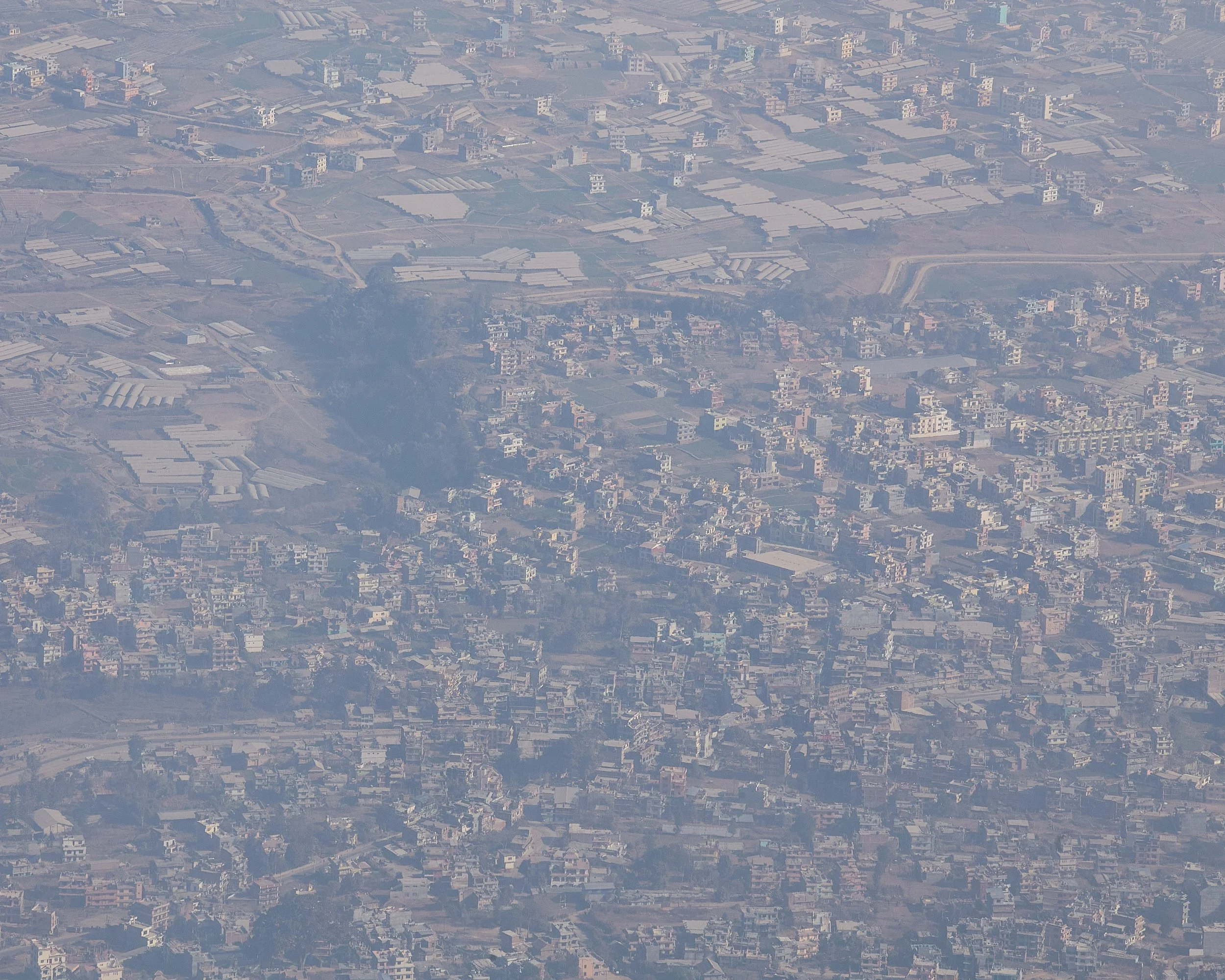Across Africa, colour is woven into daily life with effortless grace. In Ghana and Tanzania especially, the vivid textiles worn by the people often mirror the painted walls, shopfronts, and weathered streets around them. This photographic essay captures those moments where dress and environment seem to speak the same language, whether by chance or quiet intention. From bold kente patterns in Ghana to the flowing khangas of Tanzania, each image celebrates the harmony between people and place, revealing a living canvas where tradition, identity, and beauty move together in rhythm.
People and Place - The Colours of Africa
Rubble and Dust - Katmandu 2018 - 3 Years after the Earthquake
Years after the earth cracked open beneath Nepal’s capital, Kathmandu remains suspended in a delicate, dreamlike limbo. Sunlight cuts through air thick with dust, each ray carving golden paths through crumbling courtyards, fractured walls, and alleyways lined with the remnants of what once stood.
The earthquake’s scars are not just physical but atmospheric. Rubble gathers in the corners of streets like forgotten memories, and buildings lean slightly, held upright by faith, wood, and inertia. During the dry season, a fine ash rises from the city’s skin, dancing in the warm air until it blankets the valley in a pale, ochre veil.
But this beauty is not without consequence. The dust that softens the light also fills lungs. In the dry months, Kathmandu’s air becomes almost unbreathable, thick with smoke, diesel exhaust, and crushed stone. Mornings and evenings come and go under a sky that hides the mountains behind layers of particulate haze. Asthma, eye irritation, fatigue, the invisible cost of living in this atmosphere quietly shapes daily life. The pollution doesn’t just obscure the view; it dims vitality, turning each breath into an effort.
Still, life presses on. Children play beneath sagging rooftops; vendors sweep dust from their stalls; and centuries-old temples tilt gracefully into the future. In Kathmandu, beauty and decay are inseparable. And through the lens, the city reveals itself, not as a ruin, but as a portrait of resilience caught in golden suspension.
Brutalist Architecture in Okinawa Japan - 2024
I travelled to Okinawa, expecting the best seafood in Japan and tropical beach resorts, this is what I got and enjoyed very much, however, I was also confronted with the onslaught of an impending typhoon. This was disappointing but in the end turned out to be one of the most interesting revelations for me creatively and politically.
I would like to start this essay by saying FUCK THE WAR and FREE PALESTINE!!!
Not only were we faced with the onslaught of a giant storm, but we had booked accommodation on the other side of the island (which we thought was a lot smaller) and turned out to have a five-hour, city-traffic bus ride ahead of us. This journey gave me plenty of opportunity to see the architecture across the island and quite frankly, at first, I was shocked. The buildings looked shabby in the rain and they didn’t seem to have that beautiful Japanese attention to detail that you find in the rest of Japan. After a little investigation as to what had occurred on the island and why it looked the way it did, it all pieced together. I was suddenly in awe of the way the Japanese had dealt with an incredibly sad and tragic situation and still made it as aesthetically pleasing as possible. Concrete brutalist architecture, mixed with the environmental damage from the typhoons and general humidity and wetness on the island made for the perfect dirty walls series and I was feeling right at home.
The holiday had transformed from a relaxing tropical getaway to an in-depth photographic study of Japanese Brutalism and I was not mad about it. The way that Japanese people are able to incorporate design into every aspect of their lives and make the lines flow from any angle is truly amazing to me. It’s very aesthetically pleasing and I find these images to be something like a dirtied-up Wes Anderson film.
Okinawa’s brutalist architecture, with its heavy use of concrete, is uniquely suited to withstand the island’s intense weather conditions, including frequent typhoons. The thick, unadorned concrete walls resist the harsh winds and heavy rain that accompany these powerful storms. Over time, the weather leaves its mark on these structures—eroding sharp edges, staining surfaces with rainwater streaks, and cultivating a rugged patina that speaks to the resilience of both the buildings and the people who inhabit them. Witnessing these structures at the height of a Typhoon highlighted the interconnected beauty of the occupation and the force of nature.
This photographic essay explores the unique blend of raw materiality and cultural context in Okinawa's brutalist structures. Through a lens that captures both the imposing forms and the subtle interactions with their surroundings, the images reveal how these buildings reflect the island's history, identity, and the passage of time.
What happened in Okinawa, Japan, to make it look the way it does today?
During the Battle of Okinawa in 1945, one of the most devastating and bloody battles of World War II, the island suffered immense destruction. Approximately 90% of Okinawa’s buildings were either completely destroyed or severely damaged, including countless traditional structures. This large-scale devastation not only led to the loss of lives and homes but also to the annihilation of much of the island’s architectural heritage.
The relentless bombing and shelling by the American forces during the battle led to the near-total destruction of Okinawa’s traditional homes, temples, and cultural landmarks.
Today, only a few examples of traditional Okinawan architecture survive, The loss of original structures represents a significant cultural scar.
The American occupation, following the battle, introduced new architectural styles and building materials, further altering the island’s landscape. Concrete and Western-style buildings replaced the traditional wooden structures, contributing to the transformation of Okinawa’s built environment.
Traditional Okinawan buildings, known as Minka (民家), were characterized by their wooden structures, red-tiled roofs, and use of local materials like coral limestone. These homes were typically low to the ground, designed to withstand Okinawa’s frequent typhoons, with wide eaves to protect against the rain and open layouts to facilitate airflow in the island’s humid climate. These structures were a vital part of Okinawa’s cultural identity, representing a way of life deeply connected to the natural environment. You can only imagine what the island would look like today if America hadn’t bombed the shit out of this place and then kept a sizable presence there for the foreseeable future.
As of January 2025, approximately 26,000 American soldiers are still stationed in Okinawa. They are occupying the most beautiful beach on the island and there is no access for locals. From what I gathered, the American occupation is a fairly unspoken topic in Okinawa because the Japanese people are turning a blind eye and want to keep the peace, they are after all one of the most polite countries I have visited.
I commend the people of Okinawa for doing their absolute best to keep their culture alive with the ongoing presence of their invaders still with them after all these years.




















































